comprehension for kindergarten pdf
Kindergarten reading comprehension lays the foundation for future academic success, fostering critical thinking and vocabulary development․ It introduces young learners to understanding texts, sparking a lifelong love for reading․
1․1 What is Reading Comprehension?
Reading comprehension is the ability to understand and interpret written texts effectively․ For kindergartners, it involves identifying main ideas, recalling details, and making connections to prior knowledge․ Comprehension skills are built through interactive activities like answering questions, sequencing stories, and discussing plots․ It also includes critical thinking, vocabulary development, and the ability to communicate ideas clearly․ Engaging young learners with simple, age-appropriate texts and visuals helps foster a strong foundation for reading and learning, making it a cornerstone of early literacy education․
1․2 Why is Reading Comprehension Important for Kindergarteners?
Reading comprehension is essential for kindergarteners as it builds foundational literacy skills, fostering critical thinking and vocabulary development․ It helps children understand stories, communicate ideas, and connect texts to their experiences․ Strong comprehension skills early on enhance academic performance, improve focus, and cultivate a lifelong love for reading․ Effective comprehension activities, such as themed passages and interactive exercises, prepare young learners for future challenges, making it a vital component of early education․
1․3 How to Develop Reading Comprehension Skills in Kindergarten
Developing reading comprehension in kindergarteners involves interactive discussions, visual aids, and engaging activities․ Start with reading aloud and asking simple questions to encourage critical thinking․ Use themed passages and rhyming games to build vocabulary and understanding․ Incorporate story sequencing and retelling to enhance narrative skills․ Phonics-based exercises, such as identifying CVC words, also play a key role․ Provide opportunities for children to express their thoughts through drawing or speaking․ Utilize free printable PDF worksheets and sight word exercises to reinforce learning; These multi-sensory approaches create a strong foundation for comprehension, making reading both enjoyable and effective for young learners․
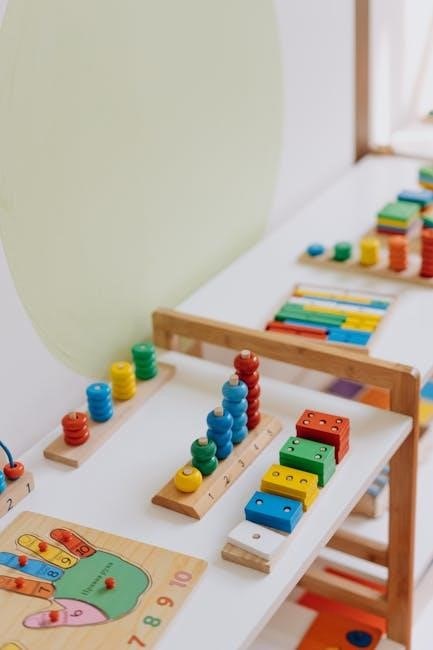
Key Components of Reading Comprehension for Kindergarten
Key components include understanding vocabulary, identifying main ideas, making inferences, and using visual aids․ These skills help kindergarteners grasp stories and build a strong reading foundation․
2․1 Understanding Vocabulary and Sight Words
Understanding vocabulary and sight words is crucial for kindergarten reading comprehension․ Sight words, often recognized by sight rather than phonics, form the foundation of early reading․ Worksheets and activities, such as rhyming games and word families, help build vocabulary and familiarize children with common sight words․ These skills enable kindergarteners to decode simple texts and comprehend stories effectively․ Interactive tools like mini-books and themed passages further reinforce vocabulary learning, making reading engaging and accessible for young learners․
2․2 Identifying Main Ideas and Supporting Details
Identifying main ideas and supporting details is a fundamental skill in kindergarten reading comprehension․ Activities like story retelling and sequencing help children grasp the central theme of a text․ Interactive discussions and questions guide young learners to pinpoint key events and details․ Visual aids, such as pictures, further assist in understanding story structure․ These exercises improve comprehension by teaching children to distinguish between essential and secondary information, fostering critical thinking and laying the groundwork for more complex reading skills in the future․
2․3 Making Inferences and Predictions
Making inferences and predictions is a key component of kindergarten reading comprehension․ These skills help children connect clues in a story to guess what might happen next or understand unseen meanings․ Activities like story retelling and sequencing encourage young learners to think critically․ Visual aids, such as pictures, further support these skills by providing context․ Interactive discussions and questions guide children in making educated guesses based on the text․ Rhyming games and wordplay also enhance their ability to recognize patterns, aiding in prediction․ These exercises foster deeper understanding and engagement with stories, building a strong foundation for advanced comprehension skills․
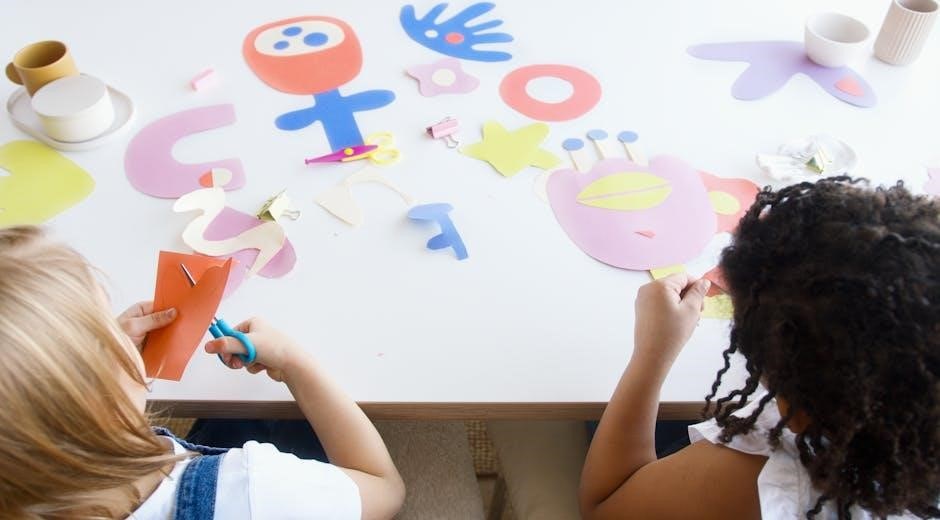
Effective Methods for Teaching Reading Comprehension
Interactive discussions, reading aloud, and using visual aids are effective methods to engage kindergarteners, fostering comprehension skills and a love for reading through structured activities․
3․1 Reading Aloud to Kindergarteners
Reading aloud to kindergarteners is a cornerstone of early literacy development, enhancing fluency and expression while introducing new vocabulary․ Engaging stories with colorful visuals capture their attention, fostering a love for reading․ This method allows teachers to model proper pronunciation and pacing, helping young learners develop phonological awareness․ Interactive elements, such as pausing for predictions or discussions, deepen comprehension․ Additionally, themed passages and mini-books provide structured opportunities to practice listening skills and respond to simple questions, reinforcing understanding and preparing them for independent reading in the future․
3․2 Using Interactive Discussions and Questions
Interactive discussions and questions are powerful tools for enhancing reading comprehension in kindergarteners․ They encourage critical thinking, verbal communication, and active engagement with the text․ Open-ended questions prompt students to share their thoughts and interpretations, while comprehension-focused queries help clarify plot, characters, and themes․ Teachers can use simple, age-appropriate questions to gauge understanding and guide further instruction․ This collaborative approach not only deepens comprehension but also fosters a love for reading and learning, making it an essential component of early literacy development․
3․3 Incorporating Visual Aids and Pictures
Incorporating visual aids and pictures is a highly effective strategy for teaching kindergarten reading comprehension․ Pictures help young learners connect stories to real-life experiences, making texts more relatable and engaging․ Visual aids such as illustrations, charts, and sequencing activities enhance understanding by providing context clues․ Matching games and picture-based questions encourage students to think critically about the content․ These tools are especially beneficial for early readers, as they bridge the gap between decoding and comprehension, fostering a deeper connection to the material and laying a strong foundation for future reading skills․
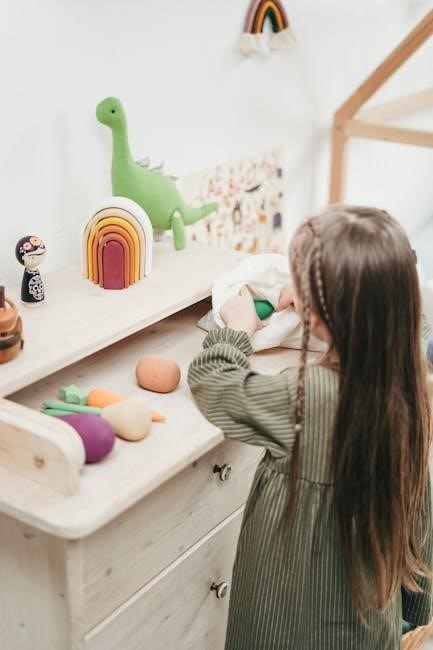
Age-Appropriate Activities for Comprehension Development
Age-appropriate activities like story sequencing, rhyming games, and matching exercises help kindergarteners develop comprehension skills․ These engaging tasks promote critical thinking and a love for reading․
4․1 Story Sequencing and Retelling
Story sequencing and retelling are essential activities for kindergarteners, helping them understand narrative structures․ By arranging story events in order, children develop critical thinking and memory skills․ Retelling stories encourages active participation, improving language and comprehension abilities․ These activities often include pictures or simple texts, making them engaging for young learners․ Regular practice with sequencing and retelling fosters a deeper understanding of stories, preparing children for more complex reading tasks․ Such exercises are widely recommended in free kindergarten reading comprehension PDF resources, as they build foundational literacy skills in a fun and interactive way․
4․2 Rhyming Games and Word Families
Rhyming games and word family activities are engaging ways to enhance phonological awareness and vocabulary skills in kindergarteners․ These exercises involve identifying and creating rhymes, such as “cat” and “hat,” while exploring word patterns like -at, -an, or -in․ Rhyming games improve sound recognition, aiding in decoding words during reading․ Word families introduce children to predictable word structures, making reading more manageable; Free kindergarten reading comprehension PDFs often include these activities, offering fun and interactive ways to build foundational literacy skills․ Regular practice with rhymes and word families fosters a strong connection between sounds and meanings, boosting overall reading comprehension abilities in young learners․
4․3 Matching and Sorting Activities
Matching and sorting activities are interactive tools that enhance kindergarten reading comprehension by developing foundational literacy skills․ These exercises involve categorizing objects, letters, or words into groups, fostering critical thinking and pattern recognition․ For example, sorting words by their initial sounds or matching pictures to letters helps children build connections between sounds and symbols․ Free kindergarten reading comprehension PDFs often include themed matching games that align with stories or vocabulary․ Such activities promote visual discrimination, memory, and fine motor skills, making learning engaging and effective․ Regular practice with matching and sorting games prepares young learners for more complex reading tasks․
Free Printable Worksheets and Resources
Free printable worksheets and resources, such as themed reading passages, sight word exercises, and phonics activities, are available in downloadable PDF formats for kindergarten reading comprehension practice․
5․1 Downloadable PDF Worksheets for Kindergarten

Downloadable PDF worksheets for kindergarten are designed to make learning engaging and accessible․ These resources include themed reading passages, sight word exercises, and phonics activities tailored for young learners․ Many worksheets feature colorful illustrations and simple stories followed by comprehension questions, making them ideal for early readers․ They often focus on CVC words, rhyming games, and word families to build foundational literacy skills․ Parents and teachers can easily print these PDFs, providing children with interactive and educational tools․ These worksheets align with kindergarten curriculum standards, offering a fun and structured way to develop reading comprehension and vocabulary development․ They are perfect for both classroom and home use․
5․2 Themed Reading Passages with Questions
Themed reading passages with questions are engaging tools for kindergarten reading comprehension․ These short, simple stories are designed around topics like animals, adventures, or everyday scenarios, capturing young learners’ interests․ Each passage is followed by basic comprehension questions that encourage children to identify main ideas, recall details, and think critically․ The stories often include colorful illustrations to aid understanding and vocabulary development․ These resources are available in downloadable PDF formats, making them easy to access and print․ They provide a fun and interactive way to improve reading skills while fostering a love for reading in young students․
5․3 Sight Word Recognition Exercises
Sight word recognition exercises are essential for building foundational reading skills in kindergarteners․ These exercises focus on identifying high-frequency words that appear often in texts but may not follow phonetic rules․ Worksheets and activities often include matching games, tracing, and word sorting to reinforce memorization․ Many resources, such as downloadable PDFs, offer themed exercises that integrate sight words into engaging contexts․ Regular practice with sight words improves reading fluency and confidence, enabling young learners to focus on comprehension․ These exercises are designed to be fun and interactive, making learning sight words an enjoyable experience for kindergarten students․
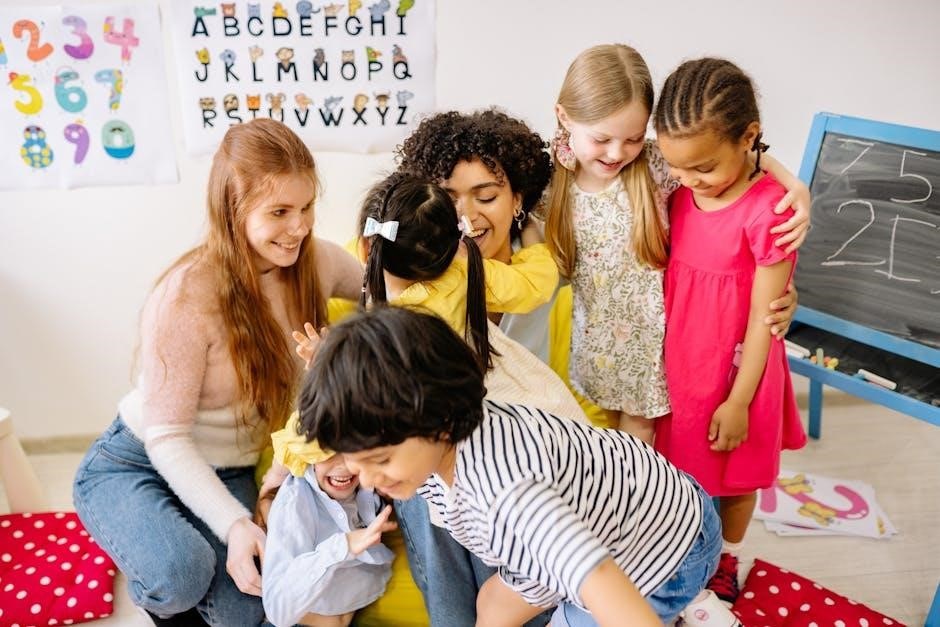
The Role of Phonics in Reading Comprehension
Phonics is vital for decoding words, enabling kindergarteners to read fluently and understand texts․ It builds foundational skills, connecting sounds to letters and enhancing comprehension abilities effectively․
6․1 Introducing CVC Words and Blending Sounds
Introducing CVC (consonant-vowel-consonant) words and blending sounds is a foundational step in phonics․ These simple three-letter words, like “cat” or “dog,” help kindergarteners decode texts․ Blending sounds involves combining individual sounds to form words, enhancing reading fluency․ Activities like segmenting words into sounds and tracing letters reinforce this skill․ Free kindergarten reading comprehension PDF worksheets often include CVC-focused exercises, making learning engaging․ By mastering CVC words, children build confidence in reading, laying a strong base for future comprehension skills․ Interactive games and picture-based exercises further support this process, ensuring young learners grasp phonics effectively․
6․2 Practicing Segmenting and Tracing Letters
Practicing segmenting and tracing letters is a vital part of phonics instruction, helping kindergarteners develop fine motor skills and sound awareness․ Segmenting involves breaking words into individual sounds, while tracing letters enhances handwriting and letter recognition․ Worksheets and activities often include tracing exercises, such as writing letters on wipe-clean surfaces or tracing letters in sand․ These practices improve letter formation and familiarity, making decoding easier․ Free PDF resources provide engaging exercises, ensuring young learners master these skills․ Regular practice builds confidence and fluency, preparing children for more complex reading tasks and fostering a strong foundation for literacy development․
6․3 Using Phonics-Based Comprehension Activities
Phonics-based comprehension activities are designed to help kindergarteners connect sounds to meanings, enhancing their ability to decode and understand texts․ These activities often include CVC word exercises, sight word recognition, and themed reading passages․ By blending sounds and identifying words, children build foundational reading skills․ Interactive tools, such as rhyming games and picture matching, make learning engaging․ Free PDF resources provide structured exercises, ensuring consistent practice․ Phonics-based activities not only improve reading fluency but also foster a deeper understanding of stories, preparing young learners for more complex comprehension tasks and strengthening their overall literacy development․
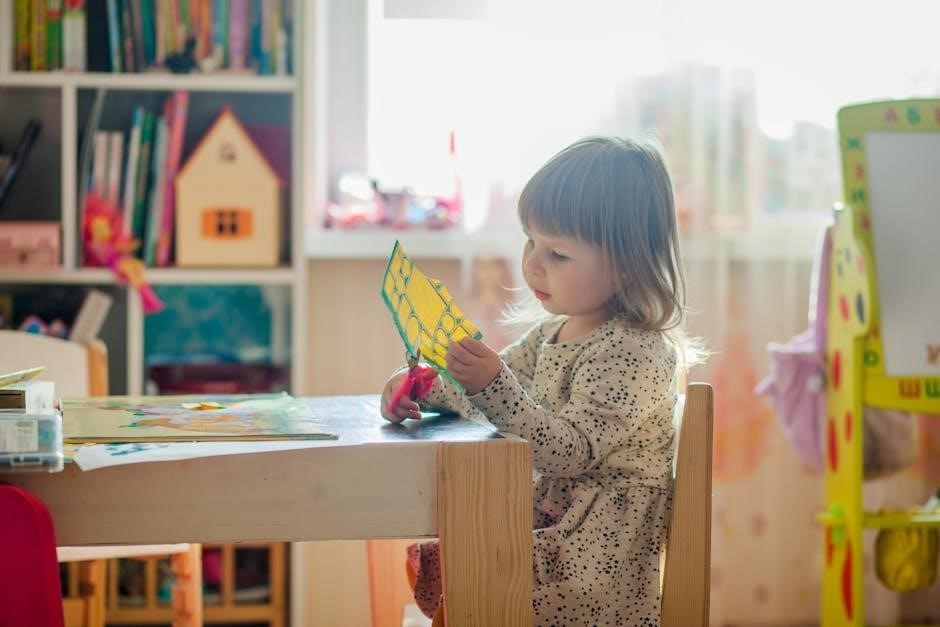
Engaging Children with Fun and Interactive Tools
Interactive tools like mini-books, riddles, and digital apps make learning enjoyable for kindergarteners․ These resources capture their attention, fostering a love for reading and comprehension skills naturally․
7․1 Using Mini-Books and Illustrated Stories
Mini-books and illustrated stories are engaging tools that capture young learners’ attention, fostering a love for reading․ These books, designed for kindergarteners, feature colorful pictures and simple, repetitive text, making them ideal for early readers․ They often include themes like animals, family, and everyday experiences, resonating with children’s lives․ The combination of visuals and text helps develop vocabulary, comprehension, and critical thinking skills․ Many mini-books are structured to promote sequencing and retelling stories, while others incorporate rhyming words or sight words․ This interactive approach makes learning fun and effective, encouraging children to explore and understand stories independently․
7․2 Incorporating Riddles and Wordplay
Incorporating riddles and wordplay into kindergarten reading activities enhances engagement and learning․ Riddles encourage critical thinking and reflection, while wordplay introduces rhyming, puns, and word families․ These activities make reading fun and interactive, helping children recognize patterns and sounds․ Wordplay also strengthens phonological awareness, a key skill for early readers․ By solving riddles, kindergarteners practice comprehension and creativity, linking words to meanings․ This playful approach fosters a deeper connection to language and literacy, preparing young learners for more complex reading tasks․ Riddles and wordplay are powerful tools for building confidence and excitement in early reading development․
7․3 Utilizing Digital Tools and Apps
Digital tools and apps offer engaging ways to enhance kindergarten reading comprehension․ Interactive platforms provide phonics games, sight word exercises, and stories with comprehension questions․ Apps featuring animations and audio support early readers in understanding texts․ Many tools include tracing exercises for letter recognition and matching games for word families․ These resources are accessible on tablets or smartphones, making learning convenient․ Interactive features like “read aloud” options and reward systems motivate young learners․ Digital tools also allow parents and teachers to track progress, ensuring a tailored learning experience․ They blend fun with education, making reading comprehension an enjoyable and effective process for kindergarteners․
Assessing Comprehension in Kindergarteners
Assessment involves observing participation, using simple quizzes, and reviewing worksheets․ These tools effectively evaluate understanding while providing insights into a child’s reading progress and skill development․
8․1 Observing Participation in Class Activities
Observing participation in class activities is a valuable way to assess comprehension; Teachers can monitor engagement during reading, note responses to questions, and evaluate interactions with peers․ This method provides insights into a child’s understanding and ability to apply skills in real-time, helping to identify strengths and areas for support․ By watching how kindergarteners participate in group discussions, storytelling, and hands-on tasks, educators can gauge their grasp of concepts and their ability to think critically․ Such observations are key to tailoring instruction and ensuring each child progresses effectively in their reading comprehension journey․
8․2 Using Simple Quizzes and Checklists
Simple quizzes and checklists are effective tools for assessing kindergarten reading comprehension․ These resources often include short, engaging questions and visual aids to evaluate understanding․ Quizzes may follow themed passages, while checklists help track progress in skills like identifying main ideas or rhyming words․ They are designed to be non-intimidating, making it easier for young learners to demonstrate their knowledge․ By incorporating these tools, educators can identify areas where students may need additional support, ensuring a strong foundation for future reading skills․ These assessments are both fun and informative, catering to the developmental needs of kindergarteners․
8․3 Reviewing Completed Worksheets and Projects
Reviewing completed worksheets and projects is a valuable way to assess kindergarten reading comprehension․ These activities often include simple stories, questions, and exercises that focus on understanding texts․ By examining finished work, educators can gauge a child’s ability to identify main ideas, recognize vocabulary, and demonstrate critical thinking․ Worksheets may also incorporate visual elements, such as pictures or sequencing tasks, to make assessment engaging․ This process helps track progress, identify areas for support, and celebrate achievements․ Regular review of completed work ensures that young learners receive constructive feedback, fostering a strong foundation for their reading and comprehension skills․

Tips for Parents and Teachers
Encourage daily reading, create a cozy reading space, and provide positive feedback․ Use interactive tools, discuss stories, and celebrate progress to nurture a love for reading․
9․1 Creating a Reading-Friendly Environment
Establishing a cozy and inviting reading space is essential for fostering a love for reading in kindergarteners․ Designate a quiet, well-lit area with comfortable seating and access to books․
Organize bookshelves with colorful, engaging materials at eye level to spark curiosity․ Incorporate visual aids like posters, word cards, and illustrations to create an interactive atmosphere․
Ensure the space is free from distractions, promoting focus and enjoyment․ Rotate books regularly to keep the selection fresh and exciting, encouraging repeated reading and exploration․
This environment not only supports comprehension development but also builds a strong foundation for lifelong literacy skills․
9․2 Encouraging Daily Reading Habits
Consistency is key to fostering a love for reading in kindergarteners․ Encourage daily reading habits by setting aside a specific time each day for reading activities․
Use themed passages, rhyming games, and interactive stories to make reading engaging and fun․ Parents and teachers can model reading behaviors, demonstrating how enjoyable it is to explore books․
Incorporate discussions about the stories to deepen understanding and spark curiosity․ By making reading a routine part of daily life, children develop a strong foundation for comprehension and a lifelong passion for learning․
9;3 Providing Positive Feedback and Reinforcement
Positive feedback and reinforcement are essential for fostering confidence and motivation in young readers․ Praise their efforts and celebrate progress, no matter how small․
Use specific examples, like highlighting a correctly answered question or a well-retold story, to show appreciation for their hard work․ Immediate, genuine feedback helps kindergarteners understand their strengths and areas for improvement․
Reinforce learning by providing stickers, stars, or verbal encouragement, creating a supportive environment that encourages a love for reading and learning․ This positive approach builds resilience and a growth mindset in early learners․
Kindergarten reading comprehension builds a strong foundation for lifelong learning․ With tools like free PDF worksheets and engaging activities, children are well-prepared for future academic growth and success․
10․1 Celebrating Progress and Achievements
Celebrating progress and achievements in kindergarten reading comprehension is essential for fostering confidence and motivation․ Recognizing milestones, such as mastering sight words or understanding simple stories, encourages young learners to take pride in their growth․ Teachers and parents can use positive reinforcement, such as stickers, certificates, or verbal praise, to highlight accomplishments․ Sharing achievements with the class or family strengthens a child’s sense of pride and reinforces the value of learning․ By celebrating progress, we create a supportive environment that nurtures a lifelong love for reading and learning, setting the stage for future academic success․
10․2 Setting Goals for Future Reading Development
Setting clear, achievable goals for future reading development helps guide kindergarten students toward improved literacy skills․ Parents and teachers should align these goals with the child’s current progress and interests․ For example, advancing from simple stories to more complex texts or mastering phonics patterns can be effective targets․ Regularly reviewing and updating these goals ensures continuous growth․ Incorporating themed reading passages and interactive activities can make learning engaging․ By setting specific objectives, we provide a roadmap for children to build confidence and proficiency, fostering a lifelong love for reading and preparing them for grade-school challenges․
10․3 Continuing to Provide Engaging Resources
Providing engaging resources is essential for sustaining young learners’ interest in reading․ Free kindergarten reading comprehension PDF worksheets offer a versatile and accessible way to reinforce skills․ Themed passages, CVC-focused exercises, and interactive activities ensure variety and fun․ Mini-books, sight word games, and phonics-based tasks cater to different learning styles․ Regularly introducing new resources keeps children motivated and curious․ Accessing digital tools and apps can also enhance learning experiences․ By consistently offering diverse and engaging materials, educators and parents can foster a love for reading and ensure continuous progress in literacy development․